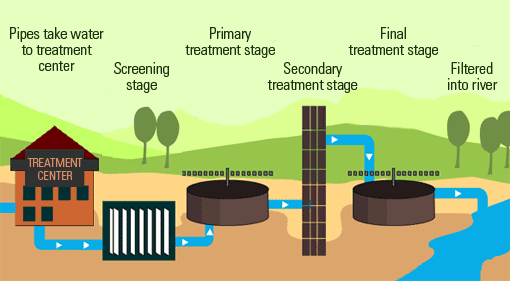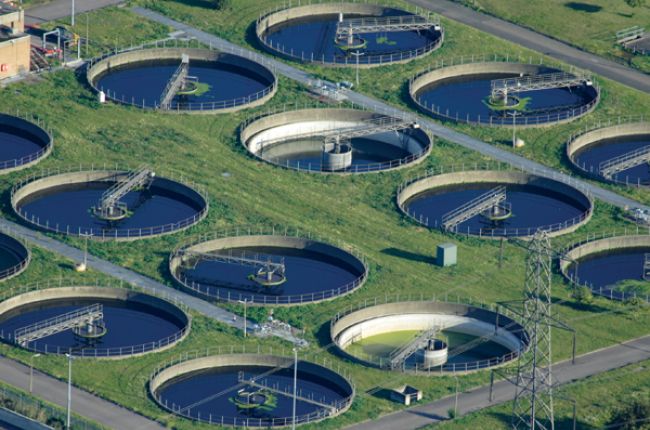Strategic Approaches to Improve Drainage Treatment Effectiveness and Minimize Ecological Impact
In the world of waste water treatment, the quest for boosted effectiveness and reduced ecological effect is a continuous obstacle that requires strategic services. The combination of innovative therapy technologies, energy-efficient processes, source healing strategies, boosted nutrient elimination strategies, and clever tracking and control systems stands for a complex framework for dealing with these pushing worries.
Advanced Therapy Technologies
Cutting-edge membrane layer filtration systems have actually changed sophisticated wastewater treatment processes, considerably boosting the elimination of impurities. These ingenious systems function by compeling water via a semi-permeable membrane, efficiently dividing impurities from the water stream. The membrane layer's tiny pores trap contaminants such as bacteria, viruses, and put on hold solids, enabling just detoxified water to travel through. This innovation has verified to be highly effective in removing a large array of contaminants, consisting of pharmaceuticals, hefty steels, and natural substances, which are commonly challenging to eliminate through standard treatment techniques.
Furthermore, membrane filtration systems use many benefits over standard therapy strategies. Furthermore, these systems are highly functional and can be easily incorporated right into existing therapy plants or used as standalone systems for decentralized applications.
Energy-Efficient Procedures
The integration of energy-efficient processes in wastewater treatment systems is critical for enhancing resource application and lowering functional prices. One key technique to improving power effectiveness in wastewater therapy is the usage of sophisticated aeration systems, such as fine bubble diffusers or surface area aerators, which can enhance oxygen transfer efficiency and lower power consumption.
Moreover, maximizing process control and automation via making use of sophisticated sensors and keeping an eye on systems can improve total energy effectiveness by changing operations in real-time based on real need and conditions. Carrying out power audits and frequently keeping track of energy efficiency indicators are essential methods to identify areas for improvement and track energy-saving efforts effectively. In general, the adoption of energy-efficient procedures in wastewater therapy not just benefits the environment yet additionally adds to long-term expense savings and operational sustainability.
Source Recovery Approaches
With a focus on maximizing resource usage and sustainability in wastewater treatment systems, the implementation of resource recovery techniques becomes a critical element in enhancing operational effectiveness. Resource recovery methods in wastewater treatment entail the recognition and removal of valuable resources from the waste stream, thereby transforming what was as soon as thought about waste into a useful asset. By implementing resource recuperation strategies such as nutrient elimination and healing, power generation from natural issue, and the manufacturing of recyclable water, wastewater therapy plants can minimize environmental influence while taking full advantage of efficiency.

Boosted Nutrient Elimination Techniques
Implementing advanced nutrient removal strategies is vital for maximizing the effectiveness of wastewater therapy systems. One of the key techniques used for boosted nutrient removal is the process of biological nutrient removal (BNR), which includes the elimination of nitrogen and phosphorus with organic procedures.

Along with BNR, progressed therapy approaches such as membrane bioreactors (MBRs) and built wetlands can also be employed to boost nutrient elimination effectiveness. MBRs utilize membranes to attain high-grade effluent standards by effectively removing nutrients and suspended solids. Built wetlands resemble natural marsh procedures to get rid of nutrients through plant uptake, microbial activity, and sedimentation. By including these innovative nutrient elimination methods into wastewater treatment systems, districts and industries can effectively minimize nutrient contamination and shield the setting.
Smart Tracking and Control Equipment
Making use of cutting-edge technology, the integration of clever surveillance and control systems reinvents the functional effectiveness of wastewater treatment centers. These systems integrate sophisticated sensors and data analytics to constantly keep an eye on key criteria such as pH levels, turbidity, liquified oxygen, and circulation rates in real-time. By accumulating and analyzing this data, operators can gain useful insights right into the efficiency of the treatment processes, making it possible for aggressive modifications to maximize treatment efficiency.
Smart surveillance and control systems additionally support remote surveillance abilities, permitting operators to gain access to real-time information and control functions from off-site places. This remote availability improves operational versatility and responsiveness, making it possible for quick interventions in instance of system malfunctions or variations in influent quality. The anticipating maintenance abilities of these systems aid avoid devices failings and reduce downtime, ultimately enhancing the general reliability of wastewater treatment click to read procedures.
Final Thought
To conclude, tactical techniques such as advanced therapy modern technologies, energy-efficient procedures, resource healing strategies, boosted nutrient removal strategies, and wise monitoring and control systems play an essential function in enhancing wastewater treatment effectiveness and lessening environmental effect. By executing these techniques, wastewater therapy plants can boost their total he said efficiency, decrease energy intake, recover valuable sources, and make certain conformity with environmental guidelines. These strategies are crucial for efficient and lasting wastewater management techniques.

In final thought, tactical strategies such as advanced treatment modern technologies, energy-efficient processes, resource recovery techniques, boosted nutrient elimination techniques, and wise monitoring and control systems play an important duty in enhancing wastewater treatment efficiency and reducing environmental influence.